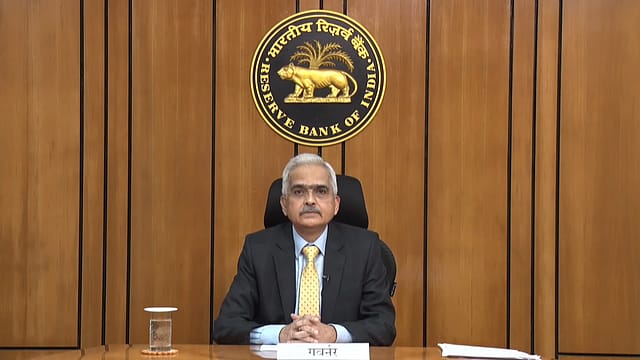RBI monetary policy: Repo, reverse repo rates unchanged
ADVERTISEMENT

The Reserve Bank of India's (RBI) monetary policy committee on Thursday kept both repo rate and reverse repo rate unchanged while maintaining an "accommodative" stance "as long as necessary".
The six-member monetary policy committee, headed by RBI governor Shaktikanta Das, voted unanimously to maintain status quo on the benchmark repo rate by keeping it at 4%. The reverse repo rate has also been left unchanged at 3.35%.
The MPC decided by a majority of 5 to 1 to continue with the accommodative stance as long as necessary to revive and sustain growth on a durable basis and continue to mitigate the impact of Covid-19 on the economy while ensuring that inflation remains within the target going forward, Das says.
The marginal standing facility (MSF) rate and the bank rate remain unchanged at 4.25%.
The MPC is projecting FY23 GDP growth at 7.8% with Q1FY23 at 17.2%; Q2 at 7.0%; Q3 at 4.3%; and Q4 at 4.5%.
The central bank retained CPI-based retail inflation forecast of 5.3% for FY22. It, however, sees CPI inflation moderating to 4.5% in FY23.
January 2026
Netflix, which has been in India for a decade, has successfully struck a balance between high-class premium content and pricing that attracts a range of customers. Find out how the U.S. streaming giant evolved in India, plus an exclusive interview with CEO Ted Sarandos. Also read about the Best Investments for 2026, and how rising growth and easing inflation will come in handy for finance minister Nirmala Sitharaman as she prepares Budget 2026.
RBI governor Shaktikanta Das says that inflation is expected to peak in the fourth quarter of the current fiscal. "At the same time, output is just barely above its pre-pandemic level, while private consumption is still lagging. Global headwinds are accentuating," he cautions.
Overall, taking into consideration the outlook for inflation and growth, the uncertainties related to Omicron and global spillovers, the MPC was of the view that continued policy support is warranted for a durable and broad-based recovery, he adds.
This is RBI’s last bi-monthly monetary policy statement of the ongoing fiscal. The three-day meeting of the MPC of the central bank began on February 8. It was postponed by a day after Maharashtra declared a day of mourning on February 7 following the death of singer Lata Mangeshkar.
The central bank also enhanced the limit for investments under the voluntary retention route (VRR) scheme for foreign portfolio investors from ₹1.5 lakh crore currently to ₹2.5 lakh crore with effect from April 1, 2022.
The VRR scheme was introduced in March 2019 to facilitate long-term investment by FPIs in debt securities issued by the government and corporates.
The Reserve Bank of India also increase the cap of e-RUPI vouchers issued by the central government and state governments from ₹10,000 to ₹1,00,000 per voucher. It also allowed such e-RUPI vouchers to be used more than once (until the amount of the voucher is completely redeemed).
This, according to the banking regulator, will further facilitate the delivery of various government schemes to the beneficiaries more efficiently.
The e-RUPI prepaid digital voucher, developed by the National Payments Corporation of India (NPCI), was launched in August 2021.
The policy statement comes days after the Union Budget announced a massive government borrowing programme to push an economic revival using the infrastructure route.
Finance Minister Nirmala Sitharaman had announced an allocation of ₹7.5 lakh crore towards capital expenditure for 2022-23. This is 35.4% higher than the ₹5.54 lakh crore allocated to capital expenditure last year.
The spending push will come from extra borrowings, an idea which has not gone well with bond markets.
